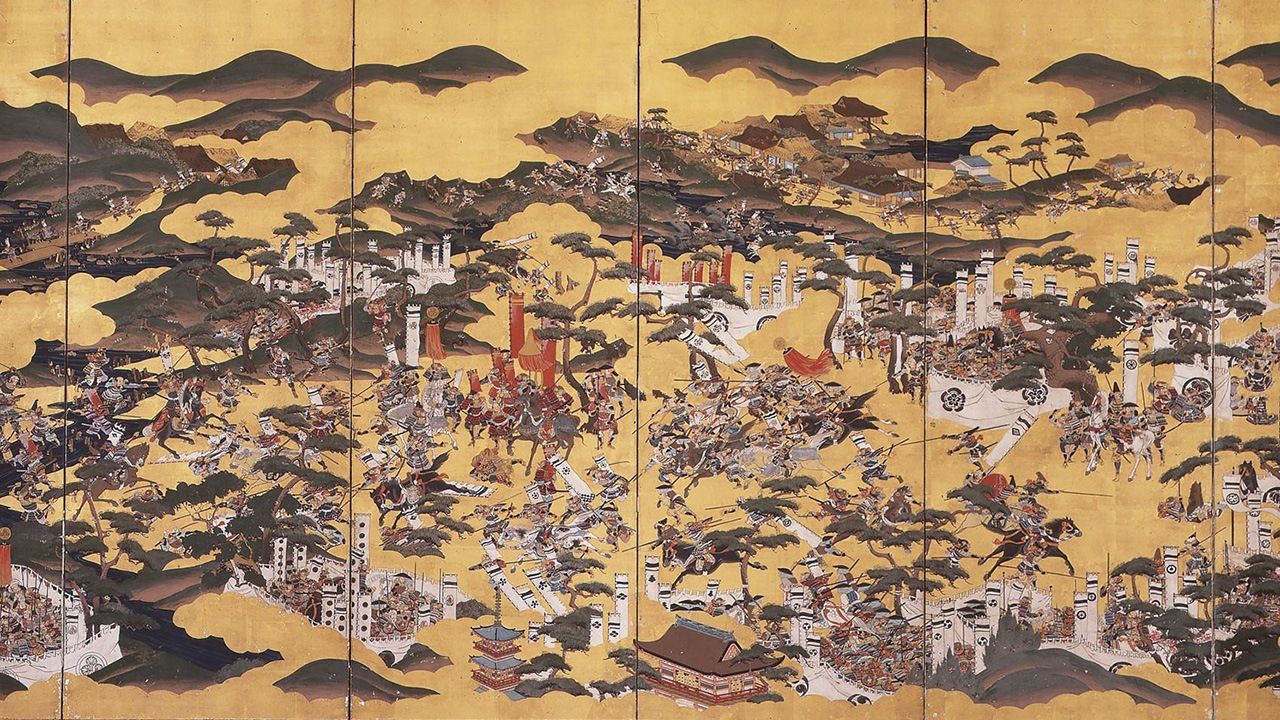
The Battle of Sekigahara: A Fight for the Future of Japan
History- English
- 日本語
- 简体字
- 繁體字
- Français
- Español
- العربية
- Русский
See the first part of this three-part series: “Ieyasu’s Ambition: The Road to Sekigahara.”
Ieyasu Named as Rebel
In July 1600, Tokugawa Ieyasu headed a huge army on the way to Aizu (now Fukushima Prefecture) with the aim of subduing the domain’s leader, Uesugi Kagekatsu, for disrespecting his authority. In the two years since the former ruler Toyotomi Hideyoshi had died, leaving his young son Hideyori (born in 1593) as a successor, Ieyasu had moved ever closer to becoming effective leader of Japan. On September 1, however, he heard that his rival Ishida Mitsunari was raising an army in the west. The next day, his own troops turned around to head west, while he went to Edo (now Tokyo), intending to follow immediately.
However, a major change in circumstances led Ieyasu to stay in Edo for longer. The powerful daimyō Mōri Terumoto entered Osaka Castle and joined the “western army,” the forces ranged against Ieyasu. With Hideyori under his control at the castle, Terumoto made allies of the boy’s mother Yodo-dono, and three more of the original Five Commissioners appointed by Hideyoshi, along with Ukita Hideie, another of the Five Great Elders.
The Toyotomi government prepared a document of impeachment detailing Ieyasu’s injustices and questioning his loyalty to Hideyori, and circulated it among the daimyō. According to its terms, the western army represented justice and Ieyasu was a rebel.
Ieyasu began to doubt whether those daimyō who had pledged loyalty to him would really fight for the eastern army. Kagekatsu or others might also try to invade Tokugawa territory. He would have to work to win over a majority.
Late for the Battle
However, any sense of crisis turned out to be unnecessary. The vanguard of Ieyasu’s troops advanced at a ferocious pace, subjugating the western army’s Gifu Castle in a single day. It now seemed that they might win victory without him.
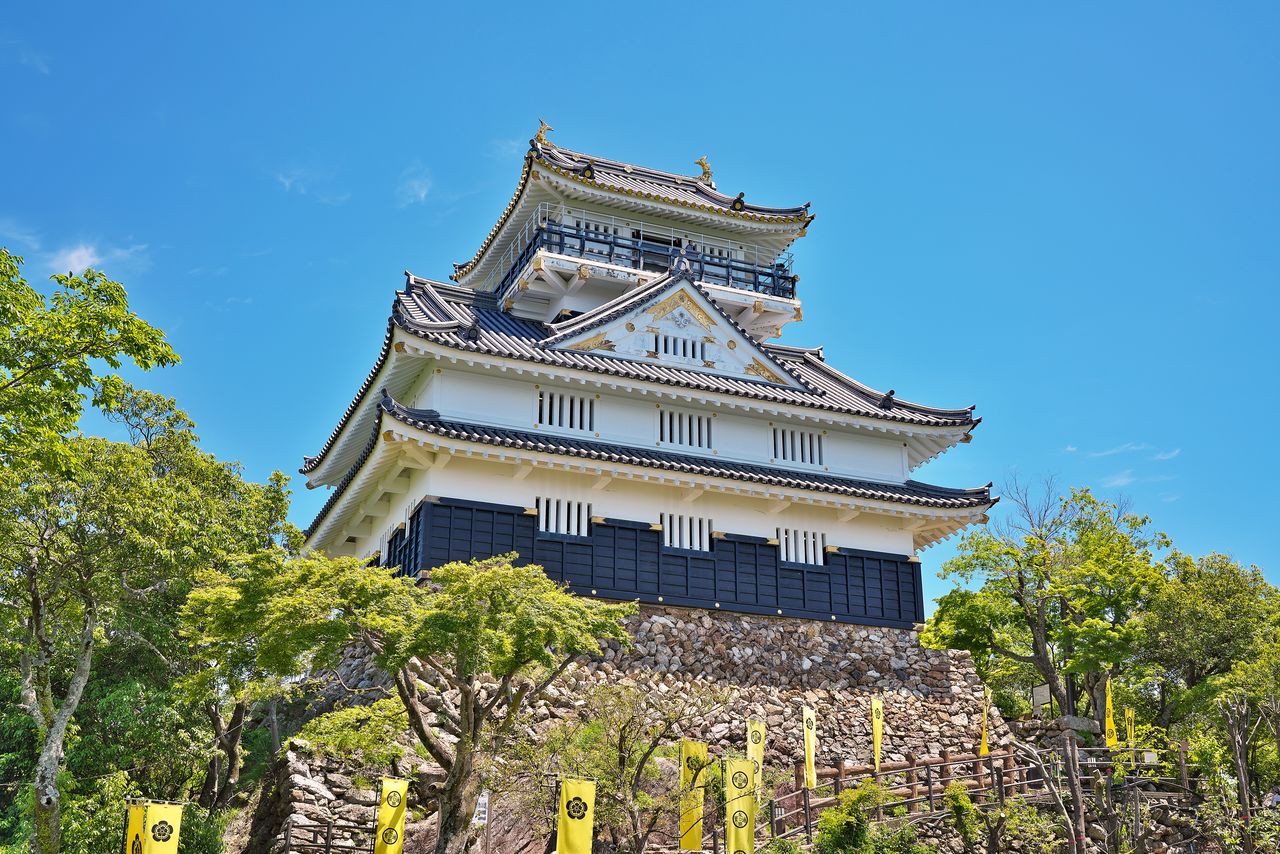
Gifu Castle was reconstructed in 1955. (© Pixta)
A startled Ieyasu sent a message telling them to wait and follow orders from the commander Ii Naomasa until he arrived, hurrying out of Edo on October 7 with an army of 32,000 (accounts vary of the exact number). He marched west along the Tōkaidō highway, staying at Okazaki Castle and then Kiyosu Castle in what is now Aichi Prefecture, where he stopped, complaining of illness. This is probably because the army of his son Tokugawa Hidetada was late to arrive.
Ieyasu led a mix of low-ranking soldiers, while Hidetada headed the main part of the Tokugawa forces, including the major daimyō and elite troops. Hidetada’s task was to subdue Shinano province (now Nagano Prefecture), including Sanada Masayuki’s Ueda Castle. After this, he was set to join with Ieyasu’s army.
Due to the changed circumstances, Ieyasu ordered Hidetada to immediately come west. However, the messenger’s arrival was delayed by flooding, and Hidetada’s army struggled to capture the castle, so the army would have no chance to take part in the decisive battle.
Ieyasu saw that if he remained in Kiyosu Castle, the vanguard troops would likely attack Ōgaki Castle, which held the bulk of the western army, on their own initiative. For this reason, Ieyasu joined them on October 20 near this fortress.
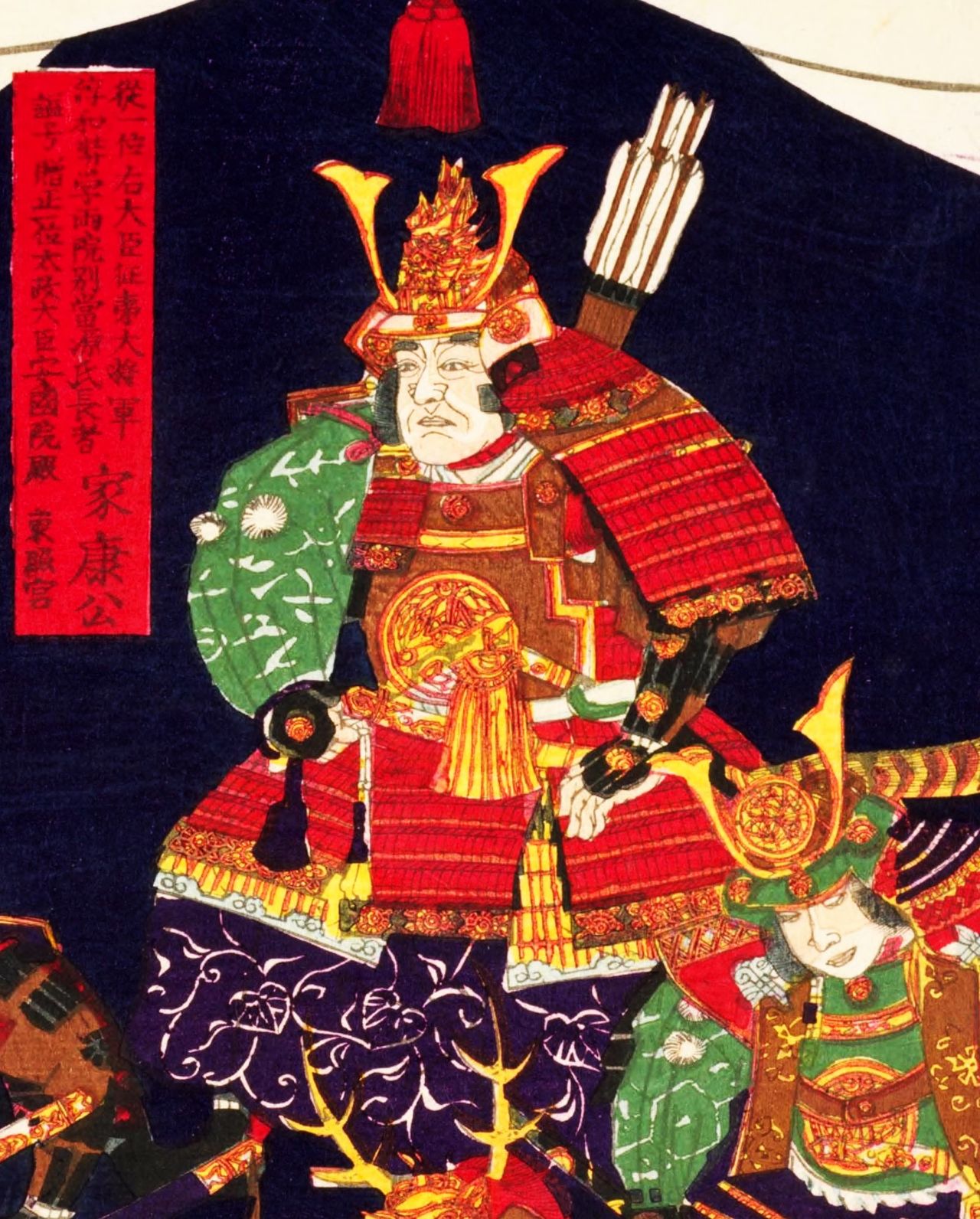
Portrait of Tokugawa Ieyasu by Nagashima Mōsai. (Courtesy National Diet Library)
Mitsunari’s Miscalculation
The fateful Battle of Sekigahara took place the next day, on October 21, 1600. There are no detailed primary sources, such as letters or diaries, concerning the events of the battle. Materials giving an overview are all secondary, written at a later date. Of these, Sekigahara shimatsuki (The Events of Sekigahara) is of relatively high quality. It was based on the experiences of Sakai Tadakatsu of Obama domain, a teenager at the time of the battle, and written in 1656 by father-and-son Confucian scholars Hayashi Razan and Gahō. I will use it here as a basis for my description.
Mitsunari initially thought to hold a defensive line centered on Kiyosu Castle and Gifu Castle, together with the strongholds of Inuyama and Takegahana. As Fukushima Masanori of Kiyosu Castle had served with Toyotomi Hideyoshi from a young age, Mitsunari thought he was sure to join the western army.
Instead, Masanori attacked Gifu Castle as part of the eastern army vanguard. The rapid surrender of the castle’s lord Oda Hidenobu (the grandson of Oda Nobunaga) meant that Inuyama and Takegahana also soon fell.
Mitsunari’s major miscalculation forced him to change his strategy. Next, he is thought to have taken troops to Ōgaki Castle to draw the eastern army, and planned to have the major western commanders Terumoto and Hideyori leave Osaka Castle and come to the front. Recent evidence has emerged of a great castle near Sekigahara, and a new theory suggests Mitsunari intended to have the two bring their armies there.
He may have judged that if Terumoto and Hideyori arrived with a large number of troops, daimyō previously loyal to the Toyotomi clan in the eastern army would lose their will to fight.
On October 14, Mitsunari moved from his Sawayama Castle to Ōgaki Castle. At the same time, he had a number of daimyō establish a defensive position at Sekigahara, around 15 kilometers back. This was where he apparently planned to have Terumoto and Hideyori array their forces.
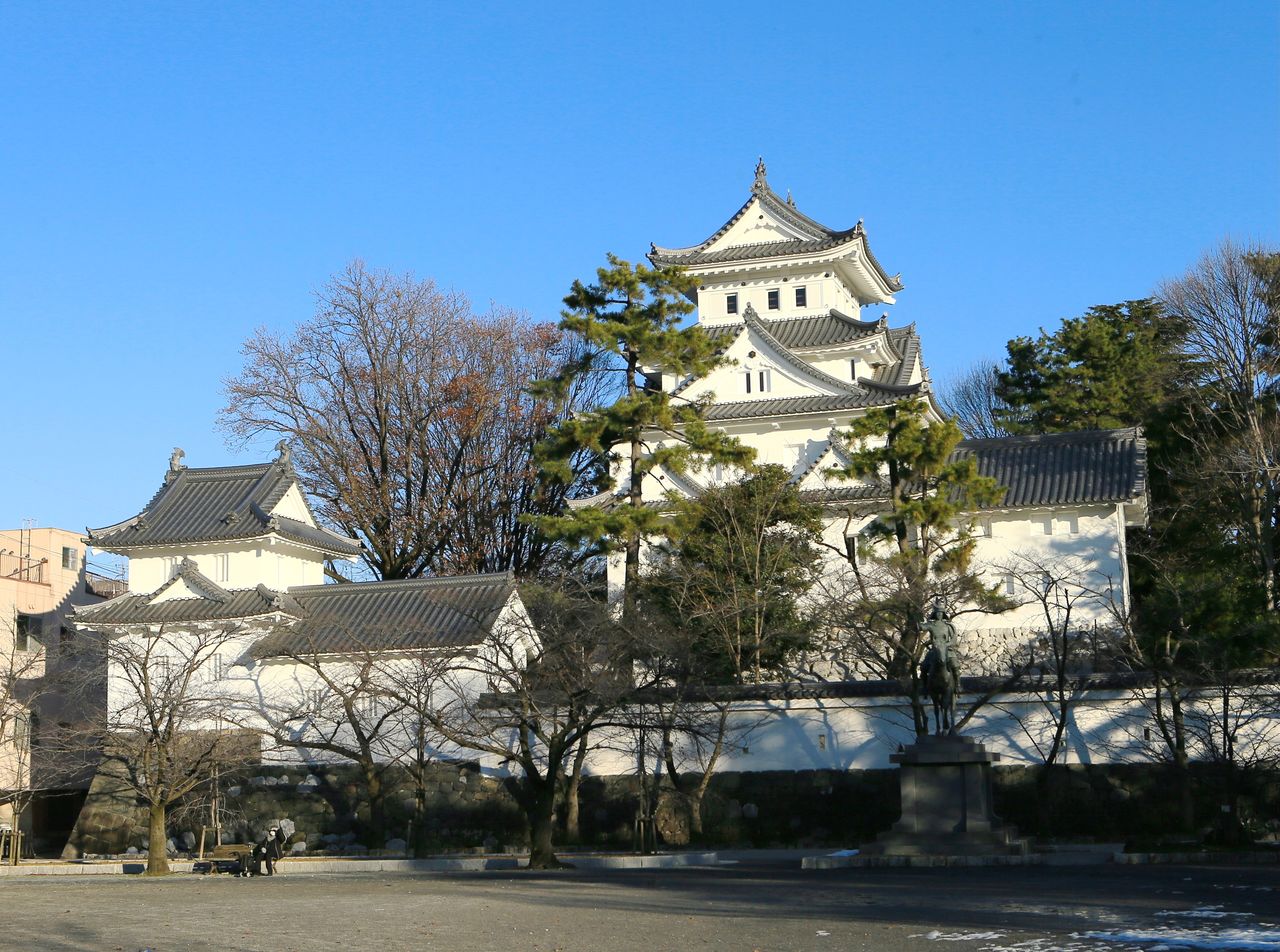
Ōgaki Castle in Ōgaki, Gifu Prefecture, was the base for Mitsunari and the western army in the Battle of Sekigahara. Originally built in 1535, it was designated a national treasure in 1936, but was burnt down during a US bombing raid in 1945. The castle was reconstructed in 1959. (© Jiji)
Meanwhile, Ieyasu wanted to avoid siege warfare, concerned that spending time on storming a castle would give Terumoto and Hideyori time to arrive from Osaka Castle. He is thought to have come up with a secret plan to deceive Mitsunari. He held a war council, saying that after capturing Mitsunari’s Sayama Castle, the eastern army would move straight on to attack Osaka Castle. As Ieyasu had hoped, this was leaked by a spy to the western army.
Flustered by this information, Mitsunari built a defensive line across Sekigahara with the aim of preventing the eastern army from advancing. The seki in Sekigahara comes from sekisho, or “checkpoint.” The area’s strategic importance as a route for passing through led to the former establishment of a checkpoint; holding Sekigahara would mean the eastern army had no other route to the west.
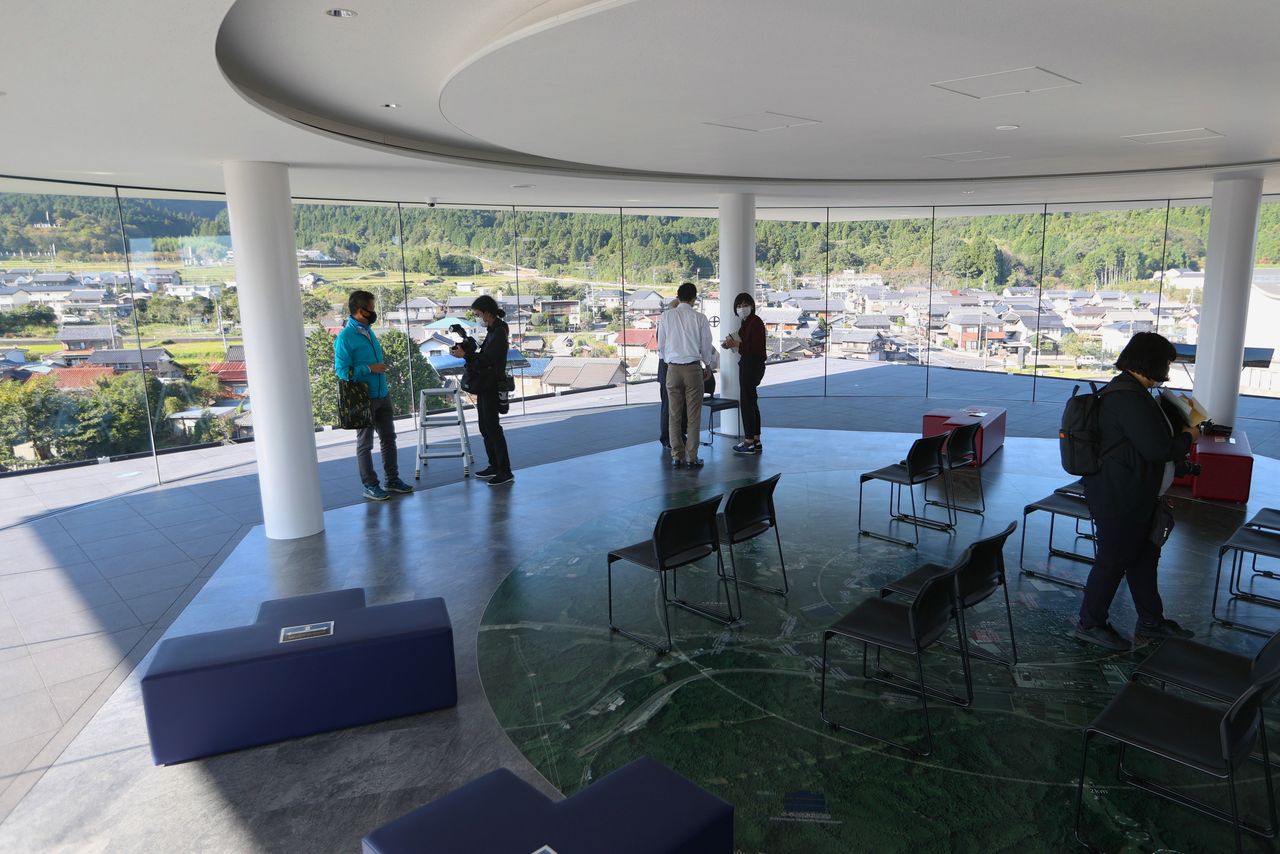
The Gifu Sekigahara Battlefield Memorial Museum opened in October 2020. Visitors can view where the battle took place from the observation room. (© Jiji)
Naomasa Jumps the Gun
Mitsunari led the western army out of Ōgaki Castle through darkness and heavy rain on the night of October 20. The force lit no torches, tied the mouths of horses so they would make no sound, and made a detour so the eastern army would not notice the soldiers’ movement as they headed to Sekigahara. The news that they had left the stronghold reached Ieyasu’s ears at around two o’clock the following morning.
He ordered the whole of the eastern army to advance, and it too progressed through rain and mud to the day’s battlefield.
Ii Naomasa of the eastern army took the first action of the battle. Having become a retainer of Ieyasu in 1575, he was a relative newcomer, but rose through his glorious achievements in war.
Masanori was meant to move first, so Naomasa’s action was a violation of orders. Other lords in the front line had also been retainers of the Toyotomi clan, and in this vanguard group only Naomasa was a Tokugawa vassal.
The western and eastern armies had completed their battle formation between six and seven in the morning. The rain had stopped, but fog hung over the area. As the two sides faced off, a group of around 50 cavalrymen tried to make their way past Masanori’s troops at the head of the eastern army. These were Naomasa and his men.
When challenged and told that he could not pass through, Naomasa cried out that he was with Matsudaira Tadayoshi, who was Ieyasu’s fourth son, and that as it was the young man’s first battle, he wanted to show him what it looked like. The small group continued and rushed toward Ukita Hideie’s 17,000 soldiers in the opposing western army.
Despite Naomasa stealing his thunder, Masanori made no complaint after the battle.
While Naomasa had brought a force of 3,000, he left most of them behind, taking just the 50 horseback soldiers on what he claimed was “sightseeing.” Masanori may have judged that in the thick fog, Naomasa had accidentally encountered the enemy and was thereby forced into combat action. In recent years, some researchers have raised doubts about whether Naomasa and Tadayoshi were really first to raise arms at Sekigahara, but in this case I will follow the commonly accepted opinion.
Ieyasu was said to be in high spirits that his son and a Tokugawa vassal had set the battle in motion.
Switching Sides
The battle had begun, but due to Ieyasu’s political maneuvering, many in the large western army decided to watch events from the sidelines, so that less than half of an estimated 80,000 troops actually fought.
Among these spectators were the 16,000 soldiers of the Mōri army, who stood on the slopes of Nangūsan. Although Mōri Terumoto was the overall commander of the western army, he was in Osaka Castle on the day of the battle, and his adopted son Hidemoto led the Mōri force.
While Hidemoto wanted to fight, Terumoto’s cousin Kikkawa Hiroie in the army vanguard would not move, no matter how he was pressed to do so. When messages came from Mitsunari urging the army to join the battle, a story goes that Hidemoto could only give the excuse that the troops were still eating, although this was probably a later invention.
Other nearby daimyō saw that the Mōri army was not moving, and did not participate in the battle either, with the result that more than 30,000 soldiers made no contribution. Hiroie was already in secret communication with Ieyasu. When he had heard that Mitsunari was raising an army with Terumoto as its leader, he tried to persuade his cousin not to agree, but Terumoto ended up joining the western group in Osaka.
Hiroie was friendly with Kuroda Nagamasa, who he used as an intermediary to tell Ieyasu that this was a ploy by one of the Mōri vassals and nothing to do with Terumoto himself. Ieyasu believed this. After this, Hiroie continued to communicate secretly with Ieyasu while acting as a member of the western army. On the day before the Battle of Sekigahara, he is thought to have revealed this to Hidemoto and major Mōri vassals.
Without Terumoto’s permission, Hiroie sent hostages to Ieyasu and received a pledge sealed in blood that if the Mōri clan’s loyalty was clear, it would be able to keep its territory. Hiroie’s inaction on the battlefield was intended as a show of loyalty.
Despite only half their troops participating, the western army put up a tremendous fight, so the two sides were deadlocked for the first few hours. Ieyasu must have been anxious about the result. If the watching soldiers from the Mōri clan and others had entered the fray at this point, it would have been all over for him.
Another member of the western forces, Kobayakawa Hideaki, had also made promises to Ieyasu, saying that he would switch sides. However, as he had made no move as yet, Ieyasu feared that he had been tricked and ordered soldiers armed with matchlock rifles to fire toward the Matsuoyama mountain where Hideaki’s troops were waiting, in a “question” as to his intentions.
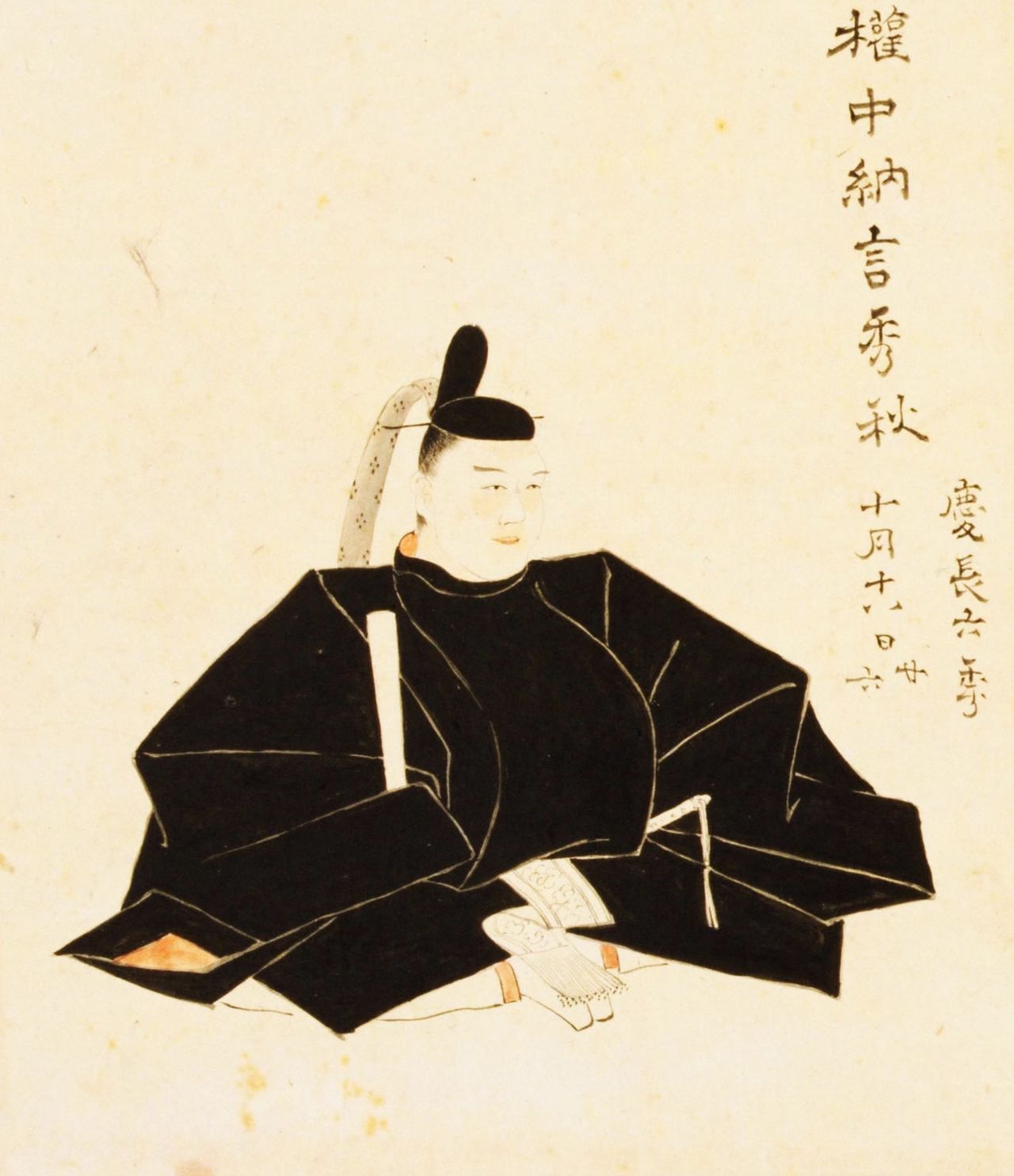
Portrait of Kobayakawa Hideaki by Kurihara Nobumitsu. (Courtesy National Diet Library)
Ieyasu’s action put paid to Hideaki’s indecision, whose army charged down the mountain to attack his nominal ally Ōtani Yoshitsugu, joined by others who switched sides at the same moment. The destruction of the Ōtani force led to the collapse of the western army.
A new theory that Hideaki fought from the start on the side of the eastern army has sparked fresh debate. Whatever the truth of this, though, in just a few hours the eastern army won victory in the Battle of Sekigahara, which would set the stage for more than 250 years of Tokugawa rule.
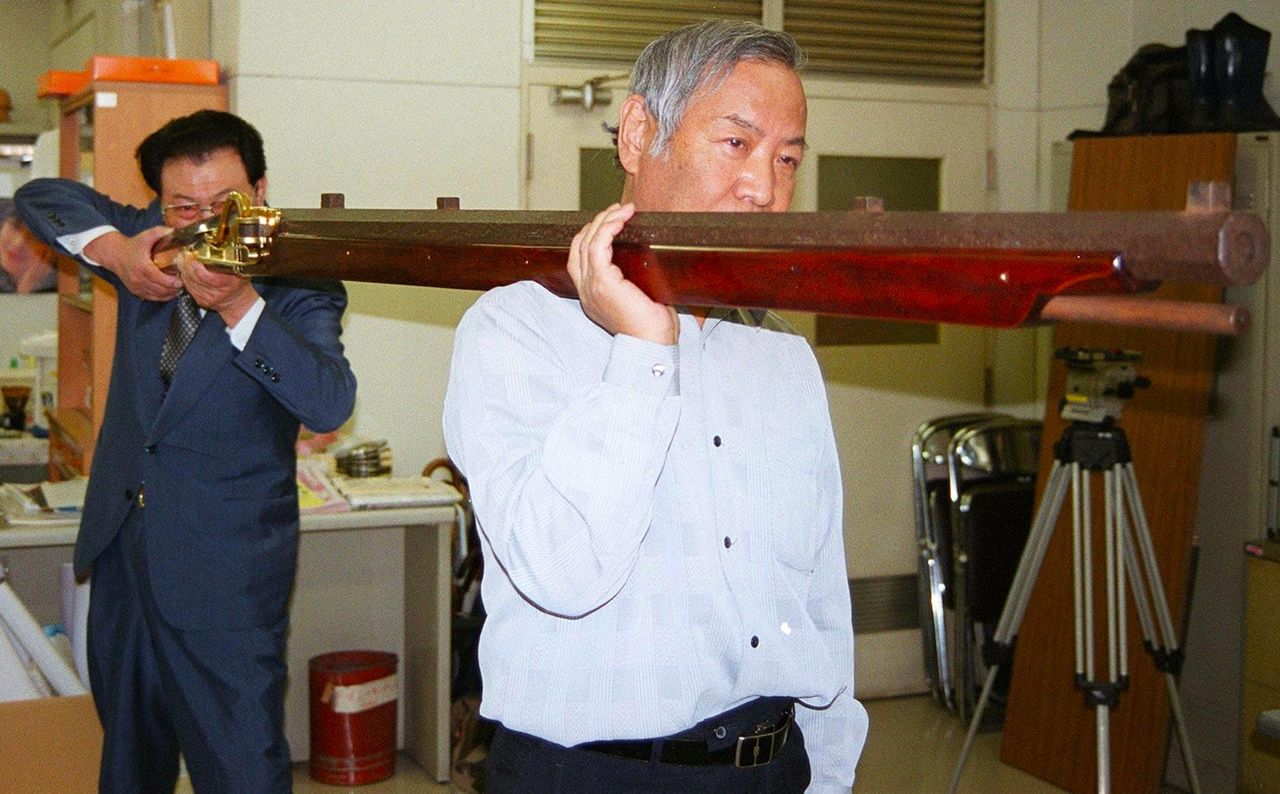
Many matchlock rifles were deployed in the Battle of Sekigahara and even leading commanders were killed or wounded by gunfire. This photo shows a restored matchlock rifle, 2.3 meters long, that was found in a house in Sekigahara in April 2001. (© Jiji)
See the third part of this three-part series: “After Sekigahara: Reshaping Japan.”
(Originally published in Japanese on October 27, 2023. Banner image: A folding screen showing the Battle of Sekigahara. This is the right-hand screen of a pair created in the Edo period [1603–1868]. It depicts the battlefield from the south, showing initial clashes. Courtesy Watanabe Museum of Art in Tottori, Tottori Prefecture.)
history Tokugawa Ieyasu Battle of Sekigahara Ishida Mitsunari